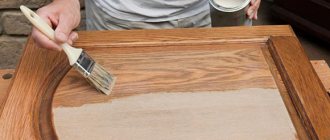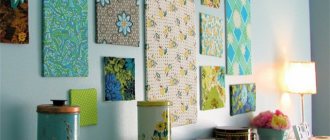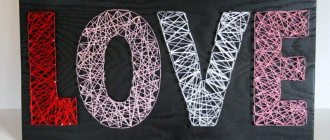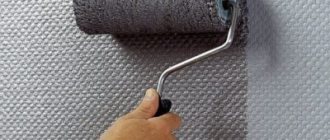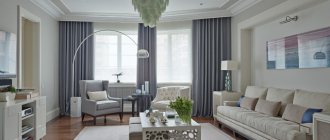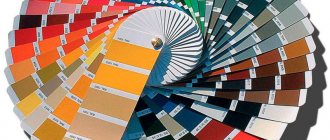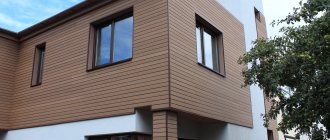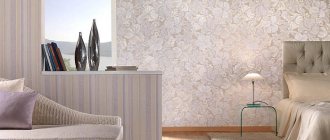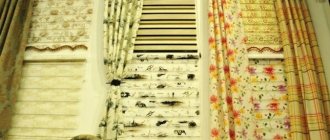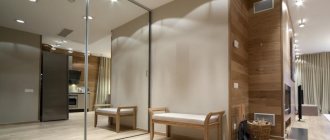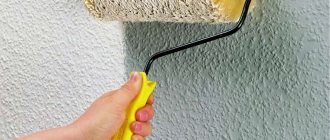Story tapestry – where to hang it?
Initially, tapestries served not only as wall decor, but also served as insulation. They can be safely called fabric carpets. Hand-woven tapestries are made from wool and silk threads using gold and silver dyes. In Europe, the main motifs of fabric carpets were pastorals - scenes from life. Such tapestries often depicted landscapes with hunters, shepherds or walking girls. It is precisely these kind of narrative textile products that we most often associate with the very concept of tapestry.
Another direction in creating textile paintings is associated with the East. From there came to us exquisite landscapes, images of flowers and plants, including sakura, birds and animals, beloved by many oriental masters, and portraits. In such tapestries, gold threads and silk raw materials, dyed with natural dyes, were especially often used.
In the East, textile paintings were given special significance. Fabric scrolls served not only as decor for decorating a home; craftsmen believed that they were able to drive away evil spirits from the home or attract positive energy, luck and wealth.
Nowadays, tapestries are not only textile wall carpets, but also bedspreads, covers for decorative pillows, original panels and tablecloths, draperies for window and doorways and much more.
Narrative tapestries, reminiscent of those hand-woven by our ancestors, would look great in a classic living room. Golden threads in textile carpets combine perfectly with the shine of luxurious chandeliers and sconces, echoing the gilded decorative elements of mirror and picture frames.
If your living or dining room has a fireplace, you can use the space above it to place a story tapestry. Obviously, the hearth most often acts as the center of attraction in the room, and with the support of a fabric pattern, the entire ensemble will look especially impressive.
If you are still hesitant to hang a story tapestry in the rooms where you spend a lot of time, in the bedroom or living room, try using wall decor in additional rooms. A tapestry with a landscape will look great in a spacious hall or hallway. Some private homes and hallways have enough free space to accommodate wall decor in the form of fabric rugs. The main thing is that there is enough free space to view the entire textile picture.
Tapestry in rooms of different functionality
Bedroom
In the past, tapestries were often placed behind the head of the bed, because this place required not only decoration, but also protection from the cold. The premises were poorly heated and were often very damp. Now people can afford to use tapestry solely as a means of decorating an apartment or house, turning it into an interesting accent in the bedroom.
If we are talking about the bedroom, then it is advisable to select tapestries with calm patterns that give a peaceful atmosphere to the home. Best for sleep:
- beautiful landscapes;
- floral motifs;
- bright birds;
- interesting animals.
You will still need to decide what you want from a tapestry in the bedroom. It can either merge with the main design of the bedroom or turn into a bright spot of color. It is advisable to place a colorful linen at the head of the bed so that the eye is not distracted by it before going to bed.
One of the best ways to decorate your bedroom space is to purchase a tapestry with floral patterns for the walls. The same themes can be repeated in other textile elements of the room - curtains or pillowcases.
Most Russians live in cities, where the weather is cold and cloudy almost always, except for three or four months of the year. At such times, it is very important to find a source of warmth and joy, interesting emotions. This is exactly what you can use colorful wall tapestries for. It’s difficult to decide to completely decorate a room with bright colors, but you can easily hang one colorful panel with an unusual pattern.
If the textile is of any value, artistic or historical, then it can be placed on a special stretcher. This immediately allows you to achieve two goals - to highlight an interesting canvas and save it from the destructive influence of the environment.
Tapestries are great for highlighting separate areas in a large multifunctional room. In the same bedroom you can find space for an alcove or designate a book corner.
Living room decoration
A large, beautiful tapestry, both factory-made and hand-made, is perfect for decorating a living room. The canvas will look especially harmonious in a classic living room or when using a neo-classical style.
If the owner of the apartment does not want to use a classic style for the living room, but has a penchant for modernity, you can find an interesting option for decorating the apartment with tapestries. For such rooms, you can choose an original fabric carpet with an interesting pattern and bright, effective combinations. Repeating the motif in other paintings in the living room will lead to a very pleasant effect of harmony and balance.
A tapestry with the right pattern can change the look of your living room beyond recognition. By choosing the right colors, you can create a warmer or cooler atmosphere at home, give the room a cheerful positive look or bring the necessary calm.
In the living room, designed in an eclectic style, not only different colors are used, but tapestries of different textures and materials are used. This will make the room more positive and will effectively complement other wall decorations.
If there is a need to use a special canvas to emphasize a certain style in the interior, then you can choose one. For example, below is an option for decorating a room in a marine theme.
Large fabric rugs make any room pop and add the right accents. If the carpet itself is bright and interesting, with a complex, thoughtful pattern, then you can limit yourself to only one canvas. Calm tapestries can easily be assembled into pleasant, unobtrusive compositions that make the atmosphere of the room lighter.
Tapestries are quite suitable for replacing curtains or screens. It is also very easy with such canvases to designate different zones in the house. At the same time, they do not interfere with movements in the apartment.
Office or creativity corner
If the house has a library or a separate office, made in a classical style, then it is best to place a tapestry with a regular landscape there. If the walls are made in a light tone, then it is very easy to place an antique tapestry or a modern composition on it.
If the decor of your home resembles a hunting lodge, then purchasing antique pastoral paintings would be an ideal addition to the atmosphere. All this is most successfully combined with finishing made of wood, hunting trophies or skins for covering the floor (it is possible to use high-quality fakes).
You can get a creative, bright atmosphere in an office or a corner dedicated to creativity if you choose a painting filled with bright colors and strange combinations. It’s worth focusing on bright wall decorations so as not to overload the room with unnecessary details.
If the owner of the apartment needs a quiet stop and comfort for work, then it is advisable to choose soft, soft tones of a wall painting. These can be calm images:
- plants;
- colors;
- animals;
- smoothed landscapes.
All this will help you get into a working mood.
Kitchen or dining room decoration
In the dining room, you will have to make sure that the tapestry is on a solid background. This will make it more accentuated, bright and clear. Below is a living room with a colorful tapestry that is bold and luxurious.
A combination of a neutral, dim tapestry that echoes the motifs with the upholstery of the seats of a classic dining room will be very advantageous. This all looks very nice against the backdrop of durable, beautiful wooden furniture with carvings.
Beautiful antique tapestries are too valuable to use nails to secure them. As a rule, such fragile paintings are placed on special stands or curtain rods, like those used for curtains. Special plugs, which also play a decorative role, prevent slipping in such products.
Here are examples of the proper use of fine fabric tapestries in a dining room entryway. The use of a white background greatly enhances the beauty of the fabric.
Sometimes designers decide to use a tapestry as an accent composition around which the rest of the design is built. To do this, select a spectacular, bright painting with an unusual, noticeable texture. Examples of this are also provided below.
Tapestry and fashion
As they say: “Fashion is cyclical.” This also applies to tapestries, although only half. There was a time when tapestries acted as a kind of tribute to the past and adorned exclusively the walls of museums, exhibitions, and sometimes the homes of art connoisseurs. Now, everything is different. They found a new life, received a second wind and turned into original attributes. Now there is no shame in decorating your home with them or even giving them as a gift to someone.
Pay attention to the handmade tapestries. Just imagine what a painstaking work this is; many would even regard it as the greatest work, the basics of which can be studied for many years. Besides everything else, such work is also quite expensive. Even if you were able to comprehend all the nuances, all the subtleties of this skillful weaving, it may take one or two days to create a canvas measuring 30 square cm. It’s amazing that progress is moving forward every day and today the production of tapestry products on an industrial scale is well established. Modern technology makes it possible to create a bright canvas no worse in quality or appearance than the work of ancient masters. The only difference is that they did everything by hand. There are many other advantages, they are quite obvious: the price is not bad, the choice is wide, availability on the market.
Tapestry products
Tapestry (from the French gobelin) is a carpet-picture (trellis) woven by hand from wool, silk (sometimes including silver and gold) threads using a picturesque pattern (cardboard).
Making trellises was a very expensive and painstaking task (it sometimes took several months to create one trellis), so only members of royal families and the most noble and wealthy feudal lords, who often organized special tapestry workshops at their castles, could afford to purchase painting carpets. In these workshops the famous series of tapestries “The Lady with the Unicorn” (XV century), as well as “The Life and Death of Christ”, “The History of Scipio”, “The History of Constantinople”, and “The History of Diana” were created. Wall tapestries in Nizhny Novgorod . Most of these tapestries can be seen in the exhibitions of the most famous museums in Europe.
For centuries, tapestry was an integral part of the decoration of royal castles and imperial palaces.
Each tapestry is unique - after all, it is impossible to create even two identical products. The work of creating a tapestry is very labor-intensive, painstaking, requiring true inspiration and skill.
Back to the article “Tapestry in the interior”
Tapestries in a modern interior bookmark 9
A tapestry can fit very organically into a modern interior
Succumbing to the spirit of the harsh Russian winters, in 2021 the world's leading designers decided to give a second life to wall hangings and heavy bedspreads, but today these are no longer those terrible Soviet “masterpieces”, but real objects of art, which the tapestry catalog will help us understand. The photographs presented at numerous traveling handicraft exhibitions and websites amaze with the abundance of interesting topics; the subjects of the images of some of the works are comparable to rare paintings.
However, before you pay tribute to fashion and run to the store for an original piece of furniture, you need to understand what a tapestry is and how it is appropriate to attach this fabric to the walls. Tapestries are hand-woven carpets, bedspreads or paintings made from silk or wool threads. The technology consists in the fact that the process takes place in detail in several stages, and the finished parts, after their completion, are sewn together, and the types of threads are often mixed.
Sometimes the use of tapestry becomes an indispensable decorative technique, allowing you to create coziness and introduce an additional color accent into the interior design
Tapestries were made from wool and silk fibers by cross-weaving colored threads
People who love this type of art mostly prefer to purchase ready-made products at flea markets or in specialized departments of a fabric store, but you can make a tapestry with your own hands. To do this, you will need to buy the necessary material, equipment, study the technique from a book or any article from the Internet - and after a while you will be able to surprise your loved ones and guests with your own original decorative element. Today you don’t need to look for all the components separately; you can buy them all together in specialized handicraft departments that sell ready-made kits.
Carpets usually depict some kind of plot or ornament
If you, however, trust professionals more or simply don’t want to wait and work for a long time, but are eager to immediately get a tapestry on the wall in one of the rooms, you can go to the store and decide on the choice of pattern and type of embroidery. However, first you should correlate the future painting, bedspread or carpet with the general style of the room; it wouldn’t hurt to preview the options in the photos offered on the Internet.
What interior styles are tapestries suitable for?
At first glance, it may seem that tapestries are suitable exclusively for luxurious and rich interiors, but this is far from the case. Tapestries are used in any stylistic direction, and now we will prove it to you.
Classical style, baroque, empire
We'll mention these styles together because they all have one thing in common: luxury. The use of tapestry in these directions is considered the canon of styles. This interior is reminiscent of the design of medieval castles, where huge canvases, the size of an entire wall, were hung in living rooms or in bedrooms at the head of the bed. Today, almost nothing has changed, since the owners of city apartments, inspired by palace decorations and pretentious luxury, purchase large tapestries and even use them instead of wallpaper.
Photo: marcusredden.com
Loft
Yes, yes, exactly the loft. Bright canvases with abstract designs or vintage patterns will be the highlight of your industrial interior. Just imagine how original the rough brick walls will be combined with warm textiles. What is there to imagine, you can see everything below. Moreover, such canvases help to visually highlight areas for sleep and relaxation.
Photo: baomoi.com
Vintage
It’s hard to imagine vintage without a lot of textiles: patterned carpets on the floor, tapestries on the walls, canopies over the beds and lots of bright pillows. All this bright madness creates a vintage mood.
Photo: ladyscorpio101.com
Shabby chic, Provence
Tapestry will add even more tenderness and beauty to shabby chic and Provence styles. Instead of classic canvases, you can use panels with ruffles or fringes that will hang from the ceiling to the floor. Canvases with images of flowers and landscapes are also welcome.
Photo: etsy.com
Scandinavian style
Scandinavian style without warm and cozy textiles is not Scandinavian style at all. In many photographs, Scandi is replete with fluffy fabrics, including tapestries. As a rule, these are canvases not in their classical presentation with plot images, but voluminous knitted models using fringe. Such wall decor will undoubtedly become the central accent of the apartment.
Preference can also be given to tapestries depicting landscapes, plants and animals - they will fit perfectly into the natural Scandi theme.
Photo: blog.froy.com
Minimalism
This style does not like a large number of decorative elements, but one or two bright accents certainly won’t hurt it, quite the contrary.
Snow-white walls, on which panels with abstract patterns will flaunt, will not leave anyone indifferent.
Photo: xtend-studio.com
What is a tapestry
Tapestries are usually called handmade wall hangings with a woven picture or some kind of design. Wool or silk threads were used for their production. Previously, tapestries were woven exclusively by hand using cross weaving. For greater beauty, the masters added silver or gold threads, which gave the images a beautiful shine. The creation of some paintings took several years, and, as a rule, several people were involved in this process. Tapestries were expensive, so only rich people could afford such a luxury.
Photo: houseandgarden.co.uk
We can say that today the tapestry in its classical manifestation is a bridge between past centuries and the modern world.
ltr”>Probably everyone remembers the times when the walls of apartments and houses were decorated
massive carpets
with bright drawings. However, time passes, and the beloved carpets are replaced by tapestries, which have not been used for some time.
interior decoration
. They begin their history back to the times of Ancient Egypt, where they decorated the palaces of the pharaohs, and then passed through the whole of Europe, performing a utilitarian task: providing thermal insulation for rooms.
Today there are so many types of tapestry that our ancestors never dreamed of. In addition to classic scenes of hunting, military campaigns and pictures from life at court, various abstract drawings and images characteristic of modern life appeared. We invite you to see how the motifs of tapestries have changed, and we are sure that this type of weaving art will not leave you indifferent.
Photo: nimvo.com
Where and how to use tapestries
Bedroom
As we have already mentioned, tapestries used to be hung in bedrooms, at the head of the bed, and not only to decorate the room, but also for insulation. Today, canvases are mainly used to decorate walls.
Photo: decohoms.com
Photo: 3dexart.com
Living room
If you have purchased a large tapestry, then the living room is the best place to display it. Canvases with beautiful landscapes will look organic and decorate the interior.
Photo: katieconsiders.com
However, if you want something more vibrant and unusual, we have a solution. For creative people, a tapestry completely covered with sequins is suitable. Hang lamps or garlands along the wall that will highlight the brilliant madness, due to which unusual visual effects will play in the room.
Photo: world.taobao.com
Cabinet
If you need a calm and neutral environment for comfortable work, choose pastel-colored canvases with peaceful landscapes. If, on the contrary, you want to create an invigorating atmosphere that will inspire you to work, it is better to give preference to tapestries with a dynamic pattern.
Photo: poppybevan.com
Photo: usefulresults.com
Kitchen and dining room
The dining room, decorated in the style of ancient castles, where there is luxurious wooden furniture with carved legs, stunning textiles on the floor and an exquisite tapestry, will become the calling card of your apartment.
Photo: loveisspeed.blogspot.com
Photo: lt.toolboxprodhouse.com
Children's room
Why not hang a bright and humorous tapestry in the children's room that will cheer up not only the child, but also the parents?
Photo: lacorrida.info
Photo: theperfectblack.wordpress.com
What it is?
First, it’s worth answering the question of what a tapestry is and when it appeared. Tapestries are woven paintings that depict various landscapes, historical scenes or other luxurious images.
It is known that the first tapestries appeared in Ancient Egypt. Then they were used to capture some important historical moments. Later, similar equipment began to be used in France and Switzerland. French tapestries were considered the most luxurious. They were considered not just a wall decoration, but a real work of art that deserved special attention.
Over time, such tapestries spread throughout the world and became a real decoration of luxurious castles and royal residences.
Today, tapestries have become popular again. They are perfect for decorating houses and apartments in different styles. A luxurious massive tapestry will help convey the spirit of another country and create a mysterious atmosphere in the room.
In addition, tapestries, especially large ones, can dampen sounds, which is also important in apartments with thin walls and poor sound insulation. Such characteristics make it very practical in everyday life. The technique of creating tapestries still remains quite complex, which justifies the high price of the products. In addition, carpets, handbags and even dresses are now made from tapestry.
Tapestry - woven picture
If you want to hang something original on the wall, I suggest you consider an option such as a tapestry picture. Unlike a framed painting, tapestries are movable, as they most often hang on a decorative cornice. The idea itself, of course, is not new, and most likely refers to traditional methods of decorating premises. In addition, we all still remember well the carpets on the walls of our grandmothers and parents, which are now the object of many jokes. But the use of tapestries for wall decoration has now become fashionable again, and is actively used by designers around the world.
The cost of a tapestry for the interior of an apartment or house
This ancient art form can be quite expensive or quite affordable, depending on how the tapestry is produced.
Tapestries, previously called tapestries, woven by hand, are quite expensive, even if created in our time. However, the development of modern industry made it possible to produce tapestries in factory conditions, which made their cost much more affordable.
How to apply a tapestry painting in the interior
The tapestry filling the entire wall looks solemn and makes a strong impression. It looks especially good on a white painted wall and can easily replace wall painting or a fresco. If you rent an apartment and for some reason do not want or cannot make repairs, you can refresh the interior or hide defects on the wall by hanging a large tapestry.
If it seems to you that the trellis does not fit well into the interior, it can be supported by upholstery of upholstered furniture, bedspreads or curtains made of tapestry fabric. This fabric is extremely strong and durable.
Decorate the wall behind the sofa with a large tapestry. Consider the size of the wall when buying a tapestry - a large picture will look good in an open, free space and will make it more cozy.
Trellis are ideal for decorating two-story halls and foyers.
Tapestry paintings can be used to decorate the wall in the bedroom above the headboard or on both sides of the bed.
Small tapestries can even decorate a spacious bathroom in a classic style.
Art lovers can find woven paintings by famous artists - in certain interiors it will look quite original.
Trellis in the style of, for example, the Renaissance will add old-world charm to a classic interior. A fabric painting in terracotta red tones can be hung above a console table or low buffet, complemented by two sconces on either side for added elegance and warmth.
Tapestries fit perfectly into interiors in any ethnic style, be it Asian or Russian style.
Tapestries can also have modern designs, for example, with abstract motifs. This decor can be an interesting accent in a bright, open space in a modern or eclectic style.
TO THE ARTICLE TAPESTRY - WOVEN PICTURE
Tatyana: January 30, 2015 at 12:43 pm After all, fashion is a surprisingly cyclical phenomenon))) I’m still waiting, maybe crinolines will come back
Tatyana: February 21, 2015 at 8:43 pm The tapestry in the toilet is sooo cool.
Tatyana: February 21, 2015 at 10:27 pm The only thing cooler is a toilet in the shape of a throne
Laralaram: April 25, 2015 at 5:54 pm very elegant, tasteful... although I didn’t quite understand in the bathroom, but the rest is just royal
Natalya: June 13, 2021 at 5:00 pm The tapestries in a baguette look very luxurious, I bought 2 paintings 130#80, they look just super!!
If you find an error, please select a piece of text and press Ctrl+Enter.
Features of care
It is better not to clean material such as tapestry yourself. Small items can still be put into the machine for gentle treatment, but larger items are better dry cleaned.
When choosing, we take into account the color and stylistic design of the room
On any tapestry product there is a small instruction from the manufacturer on how to care for the product. These rules must be strictly followed in order for the item to last as long as possible.
This will be interesting to you: REVIEW: 175+ Photos of Interesting Panels on the Wall using improvised materials with your own hands. Made from fabric, cork, beads - which is more beautiful?
History of origin
The origins of the creation of trellises are very difficult to trace. This is due to the fact that many peoples independently engaged in and developed weaving within their ethnic group. The most ancient tapestries come from Egypt. In the tomb of Thutmose IV (XV BC) a linen cloth with images of scarabs and lotuses was found, and in the tomb of Tutankhamun (XIV BC) - a dress and gloves created in the likeness of a trellis. But even such compelling reasons to claim that these are the very first tapestries do not prove this.
Historians claim that the Egyptians adopted this type of weaving from the peoples of Mesopotamia, as evidenced by the records of ancient authors.
In Homer's poem "The Odyssey" there is a mention of burial objects made using the tapestry technique. This fact indicates the existence of weaving in Ancient Greece and Rome.
On the other side of the world, in pre-Columbian America, mainly in ancient Peru, during excavations, elements of tapestries were found, most of all in their application corresponding to modern ideas about tapestries. The Peruvians not only decorated their walls with woven paintings, but also used them to hide from drafts.
The ancient trellises from China were distinguished by their sophistication and special subtlety. To create such decorative elements and clothing, Chinese craftsmen used motifs taken from nature: unusually beautiful and exotic flowers, intertwined stems, sophisticated landscapes. Japan adopted the art of this type of weaving from the Chinese peoples.
Tapestries became widely known in Europe in the Middle Ages thanks to the massive campaigns of the Crusaders. Tapestries were especially valuable trophies and were highly prized.
Each nation had its own name for trellises: among the Greeks - “tapes”, in Italy - “arezzi”, in Latin - “tapetum”. The word “tapestry” itself comes from France. In the 17th century, the royal Gobelin manufactory opened, giving its name to its products.
Moreover, experts claim that only the products of this factory can rightfully be called “tapestry”, the rest are tapestries.
It is worth noting that the scope of woven art is large and diverse. In addition to their utilitarian and decorative properties, tapestries are used to this day as upholstery for upholstered furniture, as elements of clothing or clothing in general (to create traditional outfits), as a replacement for classical icon painting, in the heraldic sense, and so on.
Tapestries in the interior of an apartment or house - photo!
The birthplace of tapestry is France, where a factory for the production of handmade decorative fabrics began operating in the 17th century. This decorative item, woven from a variety of threads (wool, silk, silver, etc.), has survived times of popularity and complete oblivion.
Tapestries in a modern apartment interior style
Today, tapestries in apartment interiors are used not only as upholstery for upholstered furniture, paintings, carpets, curtains and other interior elements, but in finishing clothes, making bags, etc.
Tapestries in the interior of the house
Most modern tapestries are made of wool, silk and cotton, that is, from natural materials. With the help of a tapestry, you can add individuality to the interior and emphasize your own vision of comfort and style. For example, in a classic living room you can use copies of antique tapestries in the form of wall panels. The children's room will be decorated with textiles that will perform not only aesthetic, but also practical functions (for example, protect the child from bruises during falls).
Pillows with images of cute animals and fairy-tale characters are an excellent decoration for a nursery. Textiles, such as a tablecloth, will help create a wealth of color in the kitchen and make it cozy. In the bedroom you can use curtains, a tablecloth on the bedside table and a tapestry bedspread. The tapestry looks especially impressive and appropriate in the office. A tapestry with heraldic motifs, for example, with the image of a royal lily, coat of arms, etc., is suitable for this room. or a wall panel depicting some European capital.
Tapestries in a modern interior
Since a tapestry is an expensive pleasure, you should follow some rules for caring for this handmade product. The main enemy of a tapestry is household dust, which settles on the rough surface of the product and over time spoils its appearance. In addition, tapestry bedspreads and furniture upholstery are not immune to accidental contamination. You can remove dust from the tapestry using a vacuum cleaner. Be sure to use a special attachment, and then gently blot the surface of the tapestry with a soft, damp cloth. If there are serious stains on the tapestry fabric, it is recommended to remove them using warm water without squeezing, followed by drying in fresh air.
Interior tapestry photo
You should know that you cannot dry the tapestry in the sun. When ironing tapestry fabric, the iron temperature should not exceed 150° C, and the product should be ironed only in exceptional cases. Before using a special tapestry detergent, apply it to a small part of the back of the product for half an hour. Further use of the detergent is possible only if there is no negative reaction.
Products
Curtains, bedspreads and covers for sofas, beds, and pillowcases are made from this material. You can find home decorations such as napkins, tablecloths, and panels. There is a separate direction in tapestry products - icons. They not only decorate the room, but also serve as a symbol of well-being and peace in the house.
Unusual headboard design
Interior Design
Tapestry is a more delicate material, and the patterns on it are very subtle and clear. Thanks to technology, smooth transitions of lines are observed on complex patterns. This type of work would be appropriate in any home or interior.
Tapestries with bright ornamental patterns look especially advantageous in modern rooms
Country
For country style, works with traditional ornaments and patterns are well suited. Tablecloths, rugs, curtains and tapestry napkins are appropriate for this style. It is better to put a blanket or bright pillows on the sofa.
Instead of a carpet, it is better to hang a panel or a tapestry picture. You can decorate a corner of the room with an icon. You can add little things to the hallway, use a tapestry bag.
This option is suitable for a cozy interior.
For country and rustic style, bright shades and even colorful patterns would be appropriate. But, everywhere there is a sense of proportion, and the main thing is not to overdo it with bright shades.
Using a tablecloth made of this material, you can transform your dining table. Napkins will help decorate old furniture, hide scratches on a nightstand, coffee table, or chest of drawers.
Bright accents will attract the attention of others
Classic style
In a classic design, all elements should be decorated in soothing shades. It is necessary to select all small things and items of high quality. These can be beautiful tapestry pillows, good, thick curtains in brown or pastel colors. They should be combined with parquet, with all furniture made from natural wood.
Simple and light classic in the form of a small panel
You can hang a picture or panel above the sofa or fireplace mantel. Classic design picture frames should be expensive. It can be gilded, silver, metal, or valuable wood.
In the bedroom you can use a bedspread, good pillowcases or heavy curtains for the window. All the same panels can hang above the bed. Closing the walls can provide comfort. If the walls in the apartment are thin, this will additionally provide heat and sound insulation.
We provide comfort and soundproofing in the bedroom
Art Nouveau and tapestry
This style is suitable for lovers of classics with modern elements. A modern style tapestry will look good in a bedroom or living room.
Unobtrusive and relaxed
In this case, the main motives for the tapestry should be floral or plant patterns.
For small rooms, landscapes or paintings with the endless sea are suitable. Curtains in the living room and bedroom should be long, reaching the floor. It would be good if there were expensive, good tiebacks and tiers.
You can choose a bedspread for a bed, a sofa to match the color of the curtains, or it could be a cover for an armchair.
Can be matched to pillows or curtains
In use are such items as lampshades made of tapestry, covers for books, albums, and boxes. Little things like this will help make the atmosphere more homely and cozy.
Modern styles
Modern styles will not spoil the tapestry in any way. Panels or other objects made of such material that will contain bright drawings in the avant-garde style, black and white combinations, realistic three-dimensional scenes will be acceptable in such an interior.
Realistic and voluminous stories are always in fashion
The most important thing is to maintain the style and not combine it with another. It is better to replace classic pillows with bolsters; they will be no less comfortable. You can hang large modular paintings or a futuristic panel on the wall.
Often the panels are hung on the entire wall
VIDEO: Decorate a wall beautifully and stylishly
Beautiful designs with tapestries
60 ideas that you will like
Basic Rules
There are rules when choosing tapestries; stick to them and there will be no difficulties. Firstly, the decorative elements in the room itself should be minimalist. Due to the fact that any tapestry product is a kind of art object that attracts attention and is a feature, a highlight, other objects, no matter what they are, will be lost against its background. This is especially true for paintings and it is clear why. Tapestry canvases are not recommended to be hung next to oil paintings or reproductions.
Secondly, the selection of a pattern, style or, as they say, plot directly depends on the purpose of the room, its design and the available decorative objects.
Popular images on tapestries and their relevance in design
Emotionally neutral tapestries are appropriate in any room
- Architectural structures, heraldic motifs. They look good in classic interiors, but will not overload them only with sufficiently high ceilings.
- Mythical creatures. Psychologists say that such images have an impact on the subconscious, so they have no place in the bedroom.
- Reproductions of famous artists. Quite appropriate in most modern interiors, they will look best in the living room.
- Landscapes. A good location is in the bedroom, as they are peaceful and relaxing.
- Still lifes and floral motifs. Lightweight, they do not cause overstimulation or unpleasant emotions, making them suitable for any room.
- Abstractions make any interior original and spectacular.
Abstract tapestries look fresh and bright
The revival of interest in tapestry is not surprising. Texture, color saturation, and the value of manual labor turn the tapestry into one of the most striking emotional accents of the interior.
3
Color selection
Psychologists are convinced that the optimal colors for the living room are green, yellow, and blue. An interesting idea is to combine several colors at once, but when combining, you need to select only those options that will help make the living room interior beautiful. For example, a combination of red and black is unacceptable; psychologists are convinced that together these colors cause serious depression.
Materials
Although many buyers think that all tapestries are similar to each other and are created from the same material, this is actually not the case. Tapestries are most often made from high-density fabrics, and this is the main thing that unites them. Most often, when creating tapestry fabrics, modern manufacturers give preference to fabrics such as jacquard.
This material has a dense texture, and in addition, it is easy to apply the desired images to it.
Less commonly, you can find thin cotton or thick wool or terry tapestry. But such products also have certain advantages. For example, warm wool has properties such as heat and sound insulation, while cotton is suitable for bright rooms.
Main types of weave
Most often, tapestries are created using a loom. The essence of hand weaving is that the threads are intertwined. There are several different techniques, and depending on which one you choose, you can get different results. By the way, it is quite possible to create machines for creating tapestries with your own hands if you have experience working with wood.
Before you start weaving a tapestry, you need to select a suitable pattern and transfer it to a workpiece consisting of threads stretched on a loom. When such a unique sketch is ready, you can move on to translating it into color.
Slanted lines
As a rule, several types of different weaves are combined in one tapestry. This allows you to obtain the desired images and combine flat parts with embossed ones. Slanted lines are where threads of two colors meet in one place.
This type of weaving is used where you need to give the image a roundness or make its shape curved.
Circular technique
The circular technique, according to the masters, is not so common. However, it is also interesting in terms of what the final result is. In this case, threads of different colors go in a circle, and the finished image seems like a work of art, painted with broad and confident brush strokes. It looks really impressive and beautiful.
Contour technique
As the name suggests, this technique is used to highlight the outline of an object. For this, as a rule, denser threads are used than in the warp. If you use this technique, the drawing will be clearer and more detailed.
Decorative plaits
Decorative flagella are what can give the finished work additional attractiveness. With the help of strands, the base of the thread is wrapped around in certain places. Most often, this technique is used for edging individual fragments or focusing attention on part of the tapestry.
Additional decor
In addition to the basic weaving, you also need to remember about additional decorative elements. Feathers, beads and other details are used to decorate the tapestry. Sometimes even grass stems and dried flowers are woven into the finished pattern. This makes the picture fuller and more prominent.
Wall decoration with fabric and textiles
One of the most convenient and simplest ways to decorate walls is to decorate with fabric. This option helps create coziness, makes the walls much warmer, and improves the acoustic properties of the rooms.
For this purpose, linen and cotton fabrics and burlap are used. You can use the fabric in two different ways:
Stick on well-plastered and leveled surfaces, like paper wallpaper. Stretch it parallel to the wall, like a canvas on a stretcher. This option is convenient because it allows you to significantly save on expensive plastering work. Moreover, the tightly stretched fabric will ideally hide all the unevenness. When gluing fabric, the surface of the walls must be prepared in the same way as for gluing with self-adhesive films: it must be absolutely smooth, well puttied.
Surface preparation
The process begins with cleaning the walls from dirt. Cracks, potholes and other defects visible on the surface are cleaned with a steel spatula to form durable plaster and sealed with mortar.
Minor cracks, crevices, and nail holes are only cut with a steel spatula and firmly sealed with putty. All repaired areas must be dried before wallpapering. After repair, the surface should be sanded well with sandpaper, removing roughness and individual grains of sand.
Walls previously painted with adhesive or lime paints are completely cleaned of plaque with water and a spatula.
Stains on the surface of the walls, if they can appear through the fabric, should be painted over with nitro varnish, nitro enamel or sealed with thin aluminum foil.
All other types of film and roll materials previously pasted must be removed.
Oil stains should not be removed. It must be washed with water and soda or soap and dried well. The surface painted with enamels is also washed and cleaned with sandpaper.
If the surface is covered with dry gypsum plaster or plasterboard sheets, first putty the joints with gypsum mortar, then cover them with gauze, putty again and sand them with sandpaper. The nails are recessed to a depth of 1 mm, the heads are painted over with oil paint, the recesses are puttied and sanded after drying.
Surfaces made of particleboard, fiberboard and plywood are prepared in the same way. Seams at the joints of sheets and places where nail heads are recessed in sheets are sealed with putty for wooden products. Dried surfaces are sanded and cleaned of dust.
Plank surfaces intended for pasting with materials are pre-upholstered with fiberboard or cardboard, followed by the operations described above.
Top line kick
This type of work is provided in all cases, except when finishing is carried out to the ceiling. The required distance from the ceiling to the top of the trim is marked with a pencil or chalk in the corners of the room on each wall. Then, using a cord rubbed with pigment or charcoal, a line is struck.
Due to the fact that in some rooms the ceiling line is not always horizontal to the mark of the top finishing line, it is advisable to check it using a building level.
Gluing and priming of surfaces This is done with diluted adhesives or mastics intended for gluing film and roll materials. This operation is necessary to secure the smallest grains of sand and other dust particles that can affect the quality of the adhesive joint.
PHOTO GALLERY (more than 100 photos)
8.1 Total Score
The tapestry is not a relic of the past. This is an option that will constantly attract the attention of others wherever he is. Try to choose according to style, and the result will not keep you waiting. After reading the information, please leave your ratings and reasoning in the comments. They will be useful to other readers. Your opinion is very important to us. Thank you for your participation. We appreciate your every feedback and time spent.
pros
- Large selection of shades, good color fastness.
- Beautiful patterns, durable material.
- Practical and attractive.
- Good texture and durability.
- functionality and high tactile properties.
Minuses
- Some types of this material are heavy in weight.
- The rigidity of the material makes it difficult to drape.
- To prevent creases and folds from appearing, you have to go to the dry cleaner; it is not advisable to wash it at home.
Add your review
